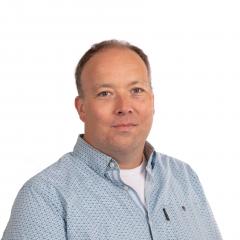SilentRoads – Working together for quiet roads
SilentRoads means a broader type of thinking, going beyond the boundaries of specific projects, and pushing a little further. Everyone benefits from it, after all. Ever since the first event in 2004, former M+P director Gijsjan van Blokland and senior advisor Ronald van Loon have joined forces to organise the SilentRoads symposiums to bring the different interested parties of road traffic noise together.
All the knowledge in one place
Ronald had only just joined M+P when he worked on a large international study with Gijsjan to compare CPX systems. This study into the properties of road surface noise led to a new measurement standard being developed. Ronald says: “In the years that followed, the work exploded. We were inundated with questions; after all, there weren’t that many experts on quiet road surfaces. This was the signal for us to devise a way to gather all the knowledge in one place. And in terms of content, to be able to view the subject from the many different points of view. This included policymakers, road builders, representatives of municipalities and provinces, as well as our colleagues from other research bureaus. We devised a symposium called SilentRoads to do this for us.”
Holistische approach
“The goal of SilentRoads is to bring together the 4 most important pillars: fundamental research, standardisation, product development and policy,” says Gijsjan. “If these 4 pillars are able to communicate well with each other, and the knowledge and objectives of each group become better known by the others, everything works better.” Ronald continues: “This holistic approach is characteristic of the way we work. It’s not only the tyre and vehicle industry that has to make an effort to limit road traffic noise, it’s a well-known fact that road surface also plays an important role as well. Products need to be developed that support the noise policy, and the best way to make that work is to bring all the involved parties together.”
Everything is negotiable on a neutral platform
There is no other platform around the world that brings together all the fields of road traffic noise. It may not seem an obvious thing to do; very often the interests of each participant can be directly opposed to each other. “But it is important to create a central meeting place,” says Ronald. “Take, for example, the discussion we had about the acoustic deterioration of quiet road surfaces in 2007. It was a pretty sensitive subject, but as a neutral platform we made it a topic for discussion. It has created awareness and set something in motion. Nowadays, the increase in road noise caused by the road surface getting older has become part of the calculation methods for working out the ambient noise.”
Not a boring symposium
“In 2004 we organized SilentRoads for the first time in the DAF Museum in Eindhoven”, remembers Gijsjan. “We didn't want boring conference rooms, we always chose special locations such as the Museum Image and Sound at the Media Park in Hilversum and Circuit Zandvoort. This year we were in the Koetshuis at Kasteel de Haar in Utrecht. We also had three sessions in Belgium. These were geared to the Belgian situation and were organized by the Research Center for Road Construction, the Ministry of Education, Culture and Science. For each edition we chose a topical theme, such as circular road surfaces. The number of participants varied from 50 to 120 over the years. It is an accessible symposium with interesting stories, partly contributed by colleagues from M+P.”
Gesture to society
Although Gijsjan no longer has a regular employment contract after his years as director of M+P and supervisory director of the Müller-BBM group, he still feels involved with SilentRoads. “We feel a responsibility towards society when it comes to the accessibility of knowledge about noise and the standardization of measurement methods. We want to contribute to this as a gesture towards society. We also think it is very important that all themes are approached integrally and that all parties involved can discuss this openly with each other. By sharing knowledge and experience, everyone can function better and achieve their own goals. That is what we always had in mind.”
